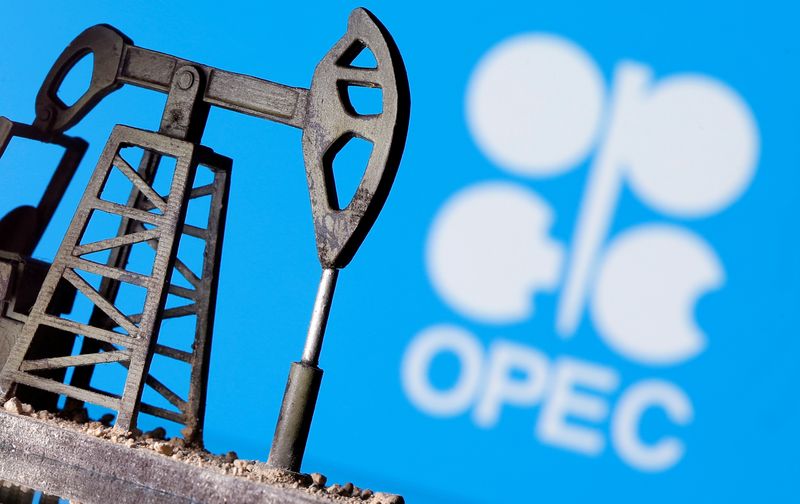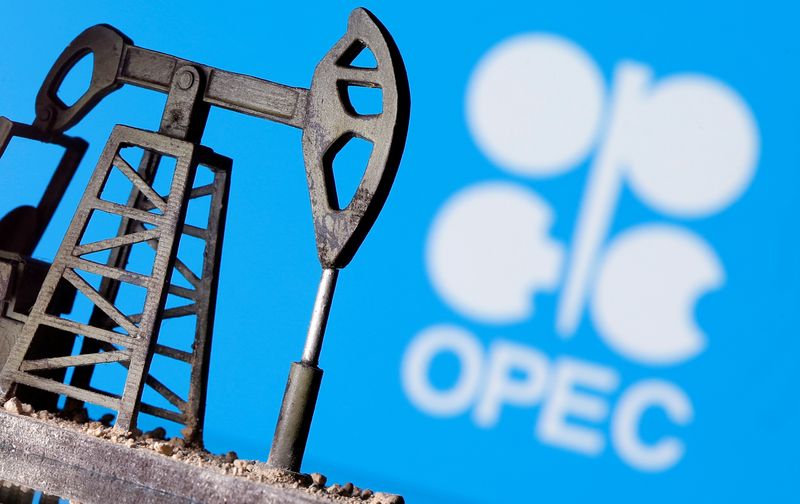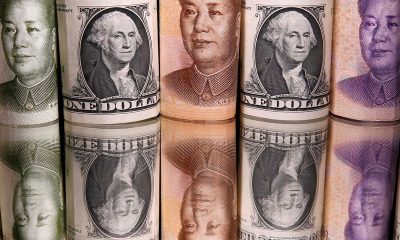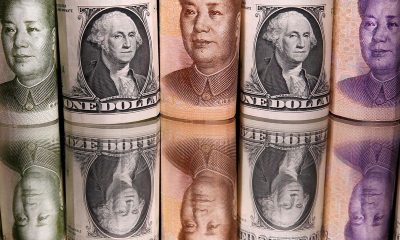Commodities
Oil dips on deflated US interest rate cut expectations, OPEC+ decision

By Nicole Jao
NEW YORK (Reuters) -Oil prices edged down on Friday and posted a third straight weekly loss as investors weighed OPEC+ reassurances against the latest U.S. jobs data that lowered expectations that the Federal Reserve will cut interest rates soon.
futures settled 25 cents lower at $79.62 a barrel, while U.S. West Texas Intermediate crude (WTI) () fell 2 cents to $75.53.
Data showed U.S. jobs growth accelerated far more than expected in May, keeping the Fed on track to hold off starting to cut interest rates until September at the earliest.
The European Central Bank went ahead with its first interest rate cut since 2019 on Thursday, despite an increasingly uncertain inflation outlook.
High borrowing costs can slow economic activity and dampen demand for oil.
“The jobs report indicated higher rates for longer,” said Andrew Lipow, president of Lipow Oil Associates. “That tends to dampen enthusiasm on the oil market.”
The dollar rallied 0.8% to a more than one-week high shortly after the release of the jobs report. [USD/]
However, oil prices have been buttressed by support from OPEC+ members Saudi Arabia and Russia, indicating readiness to pause or reverse oil output increases.
Still, crude fell for a third straight week on demand concerns, with Brent down 2.5% and WTI off 1.9%.
Oil slipped earlier this week after analysts saw Sunday’s OPEC+ meeting as an indication of rising supply, which is bearish for prices.
The U.S. active oil rig count, an early indicator of future output, fell by four this week to 492, the lowest since January 2022, energy services firm Baker Hughes said.
Meanwhile, in China, data showed that although exports grew for a second month in May, crude oil imports fell, signalling demand concerns in the world’s largest crude oil buyer.
“Exports handsomely beat expectations,” said Tamas Varga of oil broker PVM. “But worryingly for oil, overall imports were again down.”

In Russia, the operations of the Novoshakhtinsk oil refinery in southern Rostov region suffered significant disruptions after a fire following a drone attack on Thursday.
Money managers cut their net long futures and options positions in the week to June 4, the U.S. Commodity Futures Trading Commission (CFTC) said.
Commodities
Oil prices rise; U.S. crude inventories plunge, Russia-Ukraine truce eyed
Commodities
India’s Reliance to stop buying Venezuelan oil over US tariffs, sources say
Commodities
Oil prices climb on Venezuela supply worries

 Forex3 years ago
Forex3 years agoForex Today: the dollar is gaining strength amid gloomy sentiment at the start of the Fed’s week

 Forex3 years ago
Forex3 years agoUnbiased review of Pocket Option broker

 Forex3 years ago
Forex3 years agoDollar to pound sterling exchange rate today: Pound plummeted to its lowest since 1985

 Forex3 years ago
Forex3 years agoHow is the Australian dollar doing today?

 Cryptocurrency3 years ago
Cryptocurrency3 years agoWhat happened in the crypto market – current events today

 World3 years ago
World3 years agoWhy are modern video games an art form?

 Commodities3 years ago
Commodities3 years agoCopper continues to fall in price on expectations of lower demand in China

 Economy3 years ago
Economy3 years agoCrude oil tankers double in price due to EU anti-Russian sanctions



























